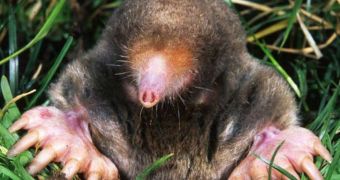While mole infestations are oftentimes commonplace on farmlands, and workers would gladly do anything to eliminate the threat, scientists are still puzzled by these subterranean creatures. The animals feature pinhead-sized eyes that are useless, given that they are covered by a thin layer of skin. This raises the question of how the creatures get around. Another mystery is how they breathe in their narrow tunnels, whose levels of oxygen are extremely low.
In a new series of researches, experts turned their attention to eastern moles (Scalopus aquaticus), in an attempt to elucidate some of their mysteries. Investigators from the University of Manitoba in Canada made an interesting discovery when they established that the blood of moles holds some very specific adaptations. These modifications allow the creatures to basically breathe in the same air they just expelled while digging a tunnel. At the same time, they get to work out, LiveScience reports.
“Imagine digging a tunnel underground while breathing into a paper bag,” says UM comparative physiologist Kevin Campbell. He is also the lead author of the new investigation, which was published in the July 16 issue of the esteemed scientific journal BMC Evolutionary Biology. According to measurements conducted in eastern moles' tunnels, oxygen levels inside barely reach 14.3 percent, whereas carbon dioxide concentrations reach 5.5 percent. For comparison, Earth's atmosphere only contains 0.039 percent CO2, and nearly 21 percent oxygen.
“The results of this study indicate that the hemoglobin protein has undergone some adaptive modification that relates to the binding and transportation of carbon dioxide,” University of Nebraska evolutionary geneticist Jay Storz explains.
He is also a coauthor of the investigation. Some oxygen receptors from hemoglobin are missing, meaning that the protein can bind more CO2. While this may seem counterproductive at first, the researchers say that the ability actually increases moles' resistance to carbon poisoning. The new data could in the near future be used to develop a new method of addressing mole population control. The researchers envision chemical approaches that would ensure the animals would find it impossible to live in farmlands.

 14 DAY TRIAL //
14 DAY TRIAL //